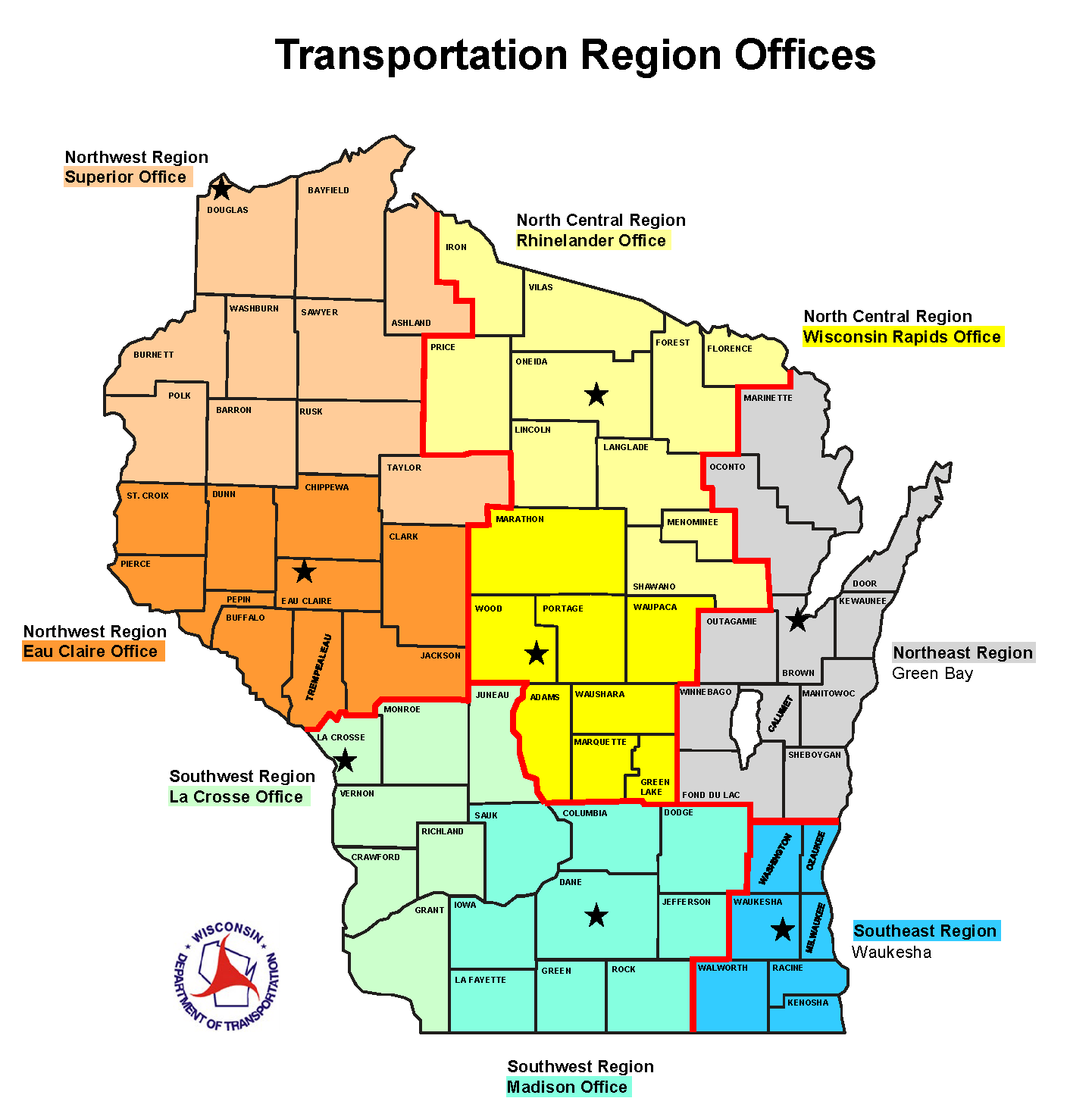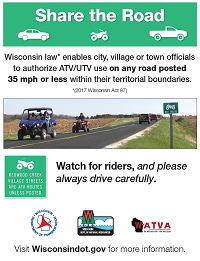These pages contain information about ATV and UTV operation on state highways, ATV trails on state highway right of way (ROW), ATV route signage and the approval steps for both ATV routes and signs. The State ROW permits tab will take you back to the permits homepage.
Contact WisDOT
 Contact a transportation region office for specific questions regarding ATV routes, ATV route signing permits, or ATV trail permits.
Contact a transportation region office for specific questions regarding ATV routes, ATV route signing permits, or ATV trail permits. The link below contains a map of the state with region boundaries and office contacts.
Contact a transportation region office
For general questions regarding WisDOT ATV policy or this website, contact:
Bob Fasick
Wisconsin DOT
Bureau of Highway Maintenance
4822 Madison Yards Way, 5th Floor South
Madison, WI 53705
(608) 266-3438
robert.fasick@dot.wi.gov
Stay safe on the road

Whether driving a car or operating an ATV or UTV, it's important to always eliminate distractions, be patient and stay focused.
The
Wisconsin DNR publishes additional resources on ATV safety and registration. Additionally, interested parties can help spread the word by displaying the
Share the Road flyer (pictured above).